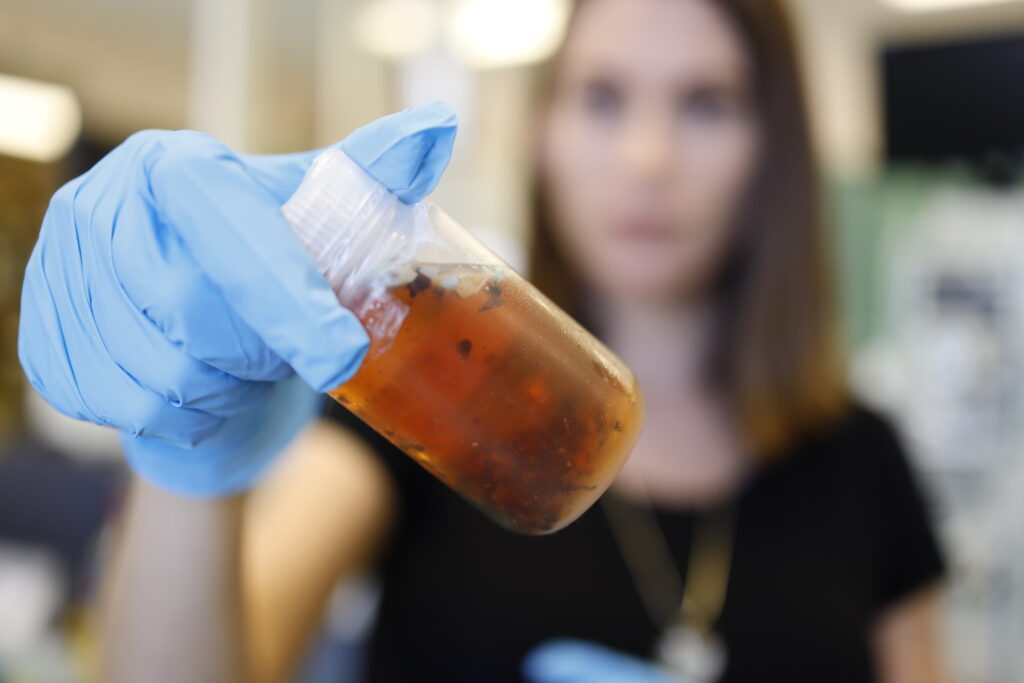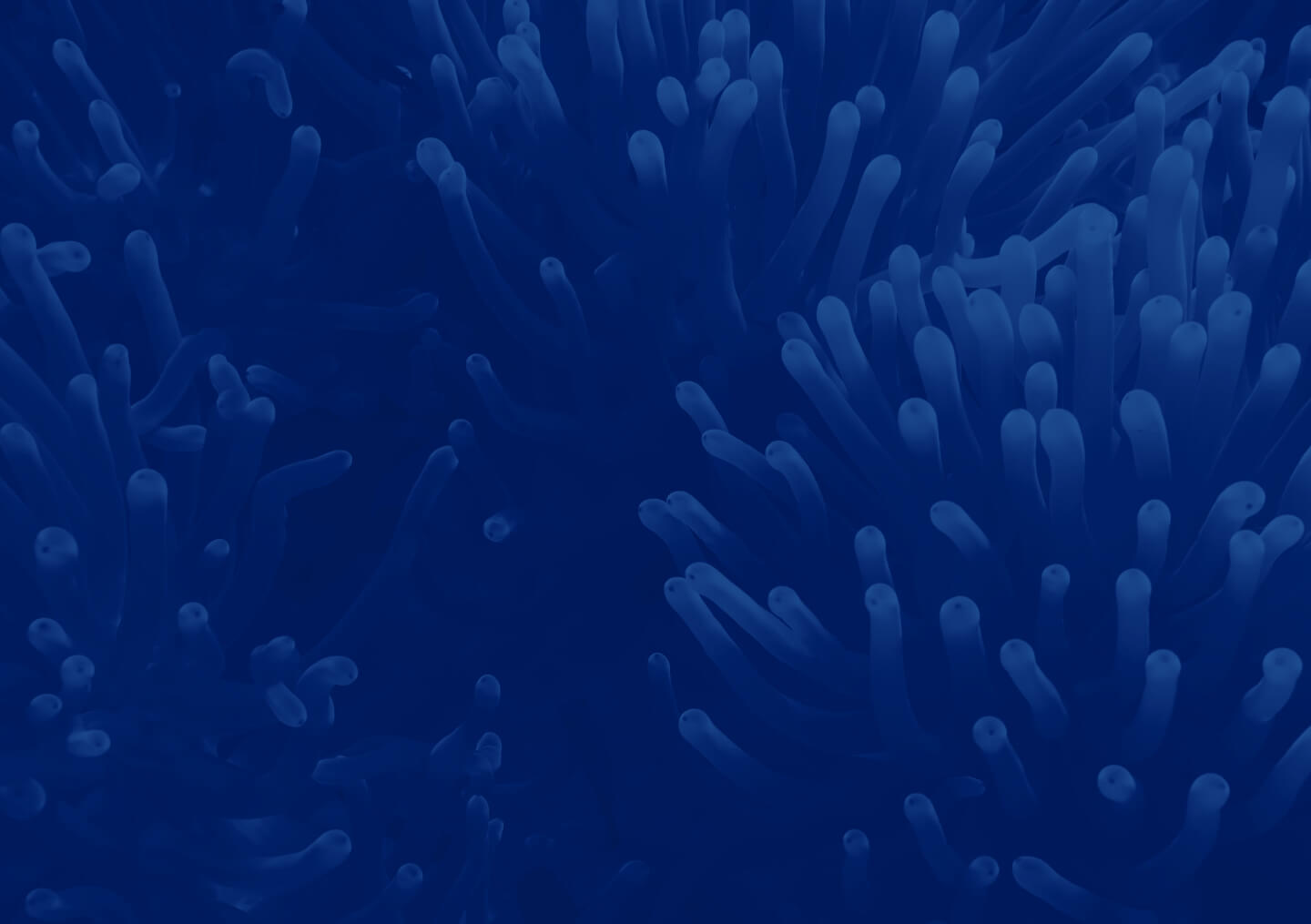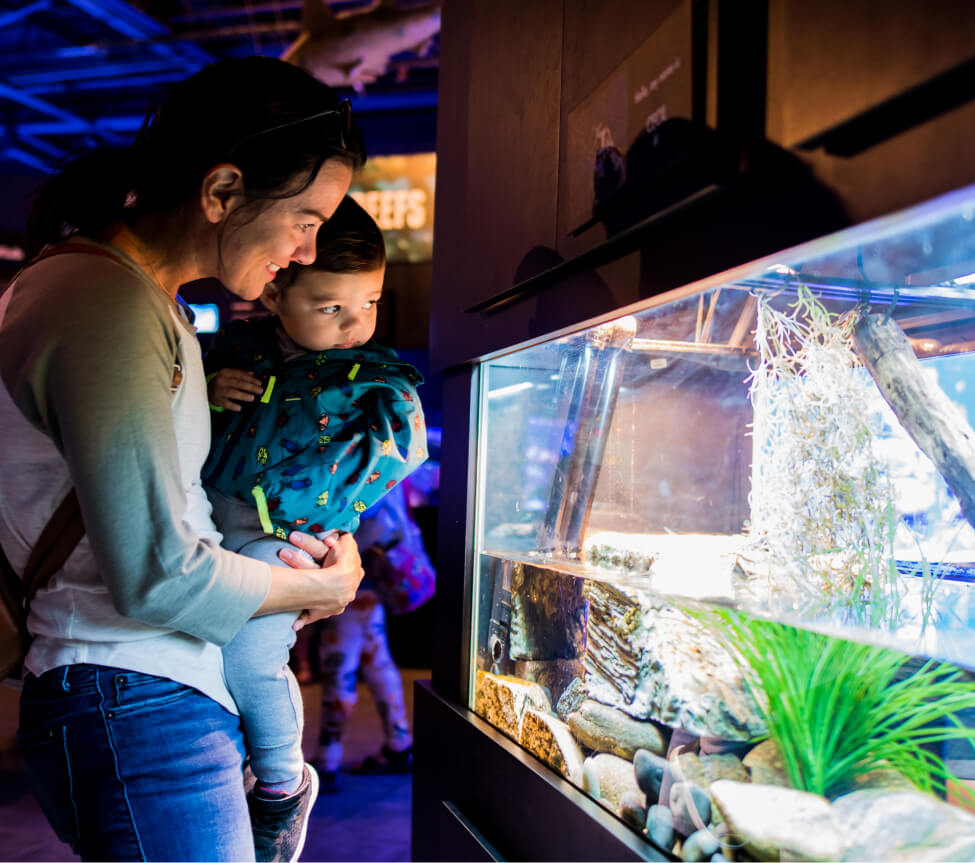The ELF lab explores a range of organismal and environmental health issues. Over the past 18 years, the ELF lab has been funded over $6.5 million to carry out oil spill and industrial contaminant pollution research, nationally and internationally.
While the most fundamental research done in our lab is the quantification of environmental levels of organic contamination from petroleum, PCBs, flame retardants, pesticides and other industrial contaminants, we are also strongly engaged in developing novel techniques for understanding cause and effects of stressors on species, populations and overall environmental health.
Towards this end, we develop and employ a variety of cutting edge approaches based on human health models. Our lab supports environmental conservation through biochemical assessment technique innovation. Our ultimate challenge is to develop technologies that allow us to effectively identify key biological attributes of health assessment, like fatty acid composition and lipid class characterization, compromises of immune function and fertility potential, measuring genotoxicity and predicting heritable responses from exposure to a variety of environmental stressors. These stressors are often the result of organic contaminants in water, sediments, air and organisms but also include noise, climate change, salinity and pH changes. Large scale exposure studies of select marine organisms exposed to a suite of stressors resulting in targeted responses are compared with field collected samples to be able to elucidate pathways of adverse outcomes to the response.
Organisms we study range from polychaete worms to Arctic whales and polar bears. The geographic range of our projects extends from the Arctic to the Caribbean, north and south and from Malalysia to Europe,
west and east. Defining a health status diagnostic panel evaluation for wildlife using a suite of key biological parameters is our main goal in order to be able to support wildlife health, conservation and management.
Program Details
- The toxicity of Deepwater Horizon oil on Gulf of Mexico fish.
- Using amino acids to determine the age of baleen whales in the Arctic.
- Assessing the health of dugongs in Malaysia exposed to chronic petroleum contamination.
- Novel markers for the identification of sex in sturgeon and other fish for conservation.
- Health and status of beluga whales.
- Polar bear contaminant and health assessment study in the Alaskan Arctic; a comparison of two populations.
- The development of biomarkers for the determination of reproductive competence in Thoroughbred horses.
- Northslope crude oil exposure in impacts on wild populations of salmon.
- Forensics of Fish Diseases in the Gulf of Mexico. 2011. Correlating Potential Impacts from the BP Horizon Oil Spill on Immune Function, Reproduction and Genotoxicity. Gulf of Mexico Research Initiative, $370,000.
- Reproductive evaluation of dolphins using protein peptide hormones. 2011 Harbor Branch Oceanographic, $95,000.
- Deepwater Horizon NRDA State of Louisiana. 2012. Immune Function and Genotoxicity of Impacted Marine Organisms. Stratus Environmental, $786,000.
- Assessment of Health Status of Beluga Whales: Pre-oil Spill Status. North Slope Borough, AK. 2012, $120,000.
- Age estimating bowhead whales using amino acid racemization. 2012-15. North Slope Borough, AK, $90,000.
- Biomarkers of health in Florida manatees. Florida Fish and Wildlife Commission. 2012-2015, $76,000.
- PAHs in prey of Cook Inlet Beluga whales. Cook Inlet Regional Citizen’s Advisory Council. 2013, $57,000.
- Determination of sex in wild caught white sturgeon in Idaho. Idaho Power and Light. 2013, $11,300.
- Sublethal effects of oil and dispersant exposure to Alaskan salmon. North Slope Borough. 2014, $200,000.
- Contaminant assessments of dugong habitat in Malaysia. Pew Foundation. 2014. $30,000.
- Sex determination of Endangered Gulf Sturgeon. NOAA. 2014, $70,000.
- Sublethal effects of oil and dispersant exposure to Alaskan salmon. Oil Spill Response Research Institute. 2015, $100,000.
- Genetic resilience of coral in Jamaica. University of the West Indies. 2014, $42,000.
- Understanding short and long term sublethal impacts of Deepwater Horizon oil on adult and sub adult Gulf of Mexico fish. 2014. Gulf of Mexico Research Initiative, $2.0 million
- Development of Equine reproductive biomarkers. 2016. Private donation, $45,000.
- Health Status and Conservation of Alaskan Polar Bears. 2016. North Slope Borough, AK and Shell Arctic Baseline Program, $370,000.
- Sex determination of endangered sturgeon. Using New Technology to address critical uncertainties for conservation and recovery. 2017. NOAA Section 6, $533,000.
- University of South Florida
- University of Birmingham
- Florida Wildlife Conservation
- North Slope Borough
- University of Alaska
- National Oceanic and Atmospheric Administration
- U.S. Fish and Wildlife Service
- State of Alaska
- Island of Curacao
- University of the West Indies
- Texas A&M University
- Clarkson University
Proud Partners in the Red Tide Initiative

Environmental Laboratory For Forensics Program Team
Additional Program Information
- Wetzel, D.L. and E.S. Van Vleet. 2003. Persistence of Petroleum Hydrocarbon Contamination in Sediments of the Canals in Venice, Italy: 1995 and 1998. Marine Pollution Bulletin. 46:1015-1023.
- Pierce, R.H., D.L. Wetzel and E.D Estevez. 2004. Charlotte Harbor Initiative: Assessing the Ecological Health of Southwest Florida’s Charlotte, Harbor Estuary. Ecotoxicology.13:275-284.
- Wetzel, D.L., and J.E. Reynolds, III. 2004. Definitive identification of fatty acid constituents in marine mammal tissues. Canadian Journal of Fisheries and Aquatic Sciences. 61:554-560.
- Wetzel, D.L. and E.S. Van Vleet. 2004. Accumulation and Distribution of Petroleum Hydrocarbons found in Mussels (Mytilus galloprovincialis) in the Canals of Venice, Italy. Marine Pollution Bulletin. 48:927-936.
- O’Hara, T., P. Hoekstra, C. Hanns, D. Muir, D. Wetzel, and J. Reynolds. 2004. A preliminary assessment of the nutritive value of select tissues from the bowhead whale based on suggested nutrient daily intakes. International Whaling Commission Scientific Committee Report SC/56/E2:1-19.
- Cheng, Y.S., T.A. Villareal, Y. Zhou, J. Gao, R.H. Pierce, D.Wetzel, J.Naar and D.G. Baden. 2005. Characterization of red tide aerosol on the Texas Coast. Harmful Algae. 4:87-94.
- Reynolds, J.E., III, D. L. Wetzel, and T. M. O’Hara. 2006 Omega-3 fatty acids and omega-6 fatty acids in blubber of bowhead whales (Balaena mysticetus): health implications for subsistence-level cultures. Arctic. 59(2):155-164.
- Downs, C.A.,J.E. Fauth, D.Wetzel, P. Hallock, J.F.Halas, R. Curry and C.M. Woodley. 2006. Investigating Coral Reef Degradation at Alina’s Reef in the Florida Keys: Cellular Physiology of White Grunt (Haemulon plumieri) as a Biological Indicator. Environmental Forensics. 7:1-18.
- Wetzel, D.L. and E.S. Van Vleet. 2005. Cooperative Aquatic Toxicity Testing of Dispersed Oil and the “Chemical Response to Oil Spills: Ecological Effects Research Forum (CROSERF). Aurand and Coelho (eds.). Ecosystem Management & Associates, Inc. Lusby, MD. Tech. Report 07-03. 105pp,
- Wetzel, D.L., Reynolds, J.E. and Christie,W.W. 2007. Identification of fatty acids by picolinyl ester derivatives. Marine Mammal Sci., 23(4): 989-990.
- Delgado, G., Glazer R. and Wetzel, D.L. 2007. The Effects of Pesticides on Conch Embryos and Larvae. The Conch Horn Vol.3 (1). Florida FWC Conch Research and Restoration Program.
- George, J.C., D.L. Wetzel, L. Dehn, T.M. O’Hara, T.M. Robertson, R.G. LeDuc, and J.E. Reynolds, III, 2008. An Analysis of Ancient Bowhead Whale Mangtak from Gambell Alaska: What can it tell us? International Whaling Commission SC/60/E?
- Wetzel, D.L., J. E. Reynolds, III, J. M. Sprinkel, L. Schwacke, P. Mercurio and S. A. Rommel. 2010. Fatty acid signature analysis as a potential forensic tool for Florida manatees (Trichechus manatus latirostris). Science of the Total Environment 408:6124-6133.
- Wilson, R.C., J. E. Reynolds III, D. L. Wetzel, L. Schweirzke-Wade, R. K. Bonde, K. F. Breuel and W. E. Roudebush. 2011. Secretion of anti-Mullerian hormone in the West Indian manatee (Trichechus manatus) with implications for assessing conservation status. Endangered Species Research. 14:107-112.
- Crespo, E.A., M. Borobia, D. Alarcon, M. Alonso, M.Bazzalo, M.Cremer, G.Filla, F. A. Magalhães, J. Marigo, H. Queiróz, J. E. Reynolds, III, Y. Schaeffer, D.L. Wetzel. 2011. Report of the sub-group on major threats to and conservation. Special Volume on the Biology and Conservation of Neotropical Dolphins of the Genus Sotalia. Latin American Journal of Aquatic Mammals 8(1-2):47-56.
- Wetzel, D.L., E. Pulster, and J.E. Reynolds, III. 2012. Organic contaminants and sirenians. IN: Hines, E., J.E. Reynolds, III, A. A. Mignucci-Giannoni, L. V. Aragones, and M. Marmontel (eds.). Sirenian Conservation: Issues and Strategies in Developing Countries. University Press of Florida, Gainesville.
- Goodbody-Gringley, G., D. L. Wetzel, D. Gillon1, E. Pulster1, A. Miller1, and K. B. Ritchie. 2013. Toxicity of Deepwater Horizon source oil and the chemical dispersant, Corexit® 9500, to coral larvae. PLoS One. Vol 8(1) e45574.
- Delgado, G.A., Glazer, R.A. and D. Wetzel. 2013. Effects of Mosquito Control Pesticides on Competent Queen Conch (Strombus gigas) Larvae. Biol. Bull. 225:71-78.
- Ponnampalam, L. S., Fairul Izmal, J. H., Ichikawa, K., Akamatsu, T., Kee Alfian, A. A., Wetzel D. and Reynolds III, J. 2014. A multi-pronged approach for overcoming knowledge barriers on the ecology and status of dugongs (Dugong dugon) in Johor, Malaysia: Towards critical habitat protection. Pages 101 — 112 in Wan Musthapa, W. F. Z., Nik Rosely, N. F. and Othman, A. S. (Eds). Johor Nature Heritage. School of Biological Sciences, Universiti Sains Malaysia, Penang, Malaysia.
- Synder, S.M., Pulster, E.L., Wetzel, D.L, and S.A. Murawski. 2015. PAH Exposure in Gulf of Mexico Demersal Fishes, Post-Deepwater Horizon. Environ. Sci. Technol., 2015, 49 (14), pp 8786–8795.
- Hong, Y.S., Wetzel, D.L., Pulster, E.L., Hull, P., Reible, D., Hwang, H.M., Ji, P. Rifkin, E., Bouwer, E. 2015. Significant spatial variability of bioavailable PAHs in water column and sediment porewater in the Gulf of Mexico 1 year after the Deepwater Horizon oil spill. Environmental Monitoring and Assessment. 187:646. doi:10.1007/s10661-015-4867-x.
- Romero, I. C., Özgökmen, T., Snyder, S., Schwing, P., O’Malley, B. J., Beron-Vera, F. J., Wetzel. D.L. et al. 2016. Tracking the Hercules 265 marine gas well blowout in the Gulf of Mexico. J. Geophys. Res. Oceans, 121, 706–724, doi:10.1002/2015JC011037.
- Wetzel, D.L., J.E. Reynolds, III, P. Mercurio, G.H. Givens, E.L. Pulster and J.C. George. 2017. Age estimation for bowhead whales, Balaena mysticetus, using aspartic acid racemization with enhanced hydrolysis and derivatization procedures. Journal of Cetacean Research and Management (In Press).
- Hollenbeck, C.M., Portnoy, D.S., Wetzel, D.L., Sherwood, T.A., Samollow, P.B., Gold, J.R. 2017. Linkage Mapping and Comparative Genomics of Red Drum (Sciaenops ocellatus) Using Next-Generation Sequencing. G3: Genes, Genomes, Genetics Early online January 25, 2017; DOI: 10.1534/g3.116.036350
- Pulster, E., Wetzel, D.L., Main, K. and S. Murawski. 2017. Species specific metabolic capacity of naphthalene and phenanthrene in three species of marine teleosts exposed to Deepwater Horizon crude oil. (In Press). Environmental Toxicology and Chemistry.












